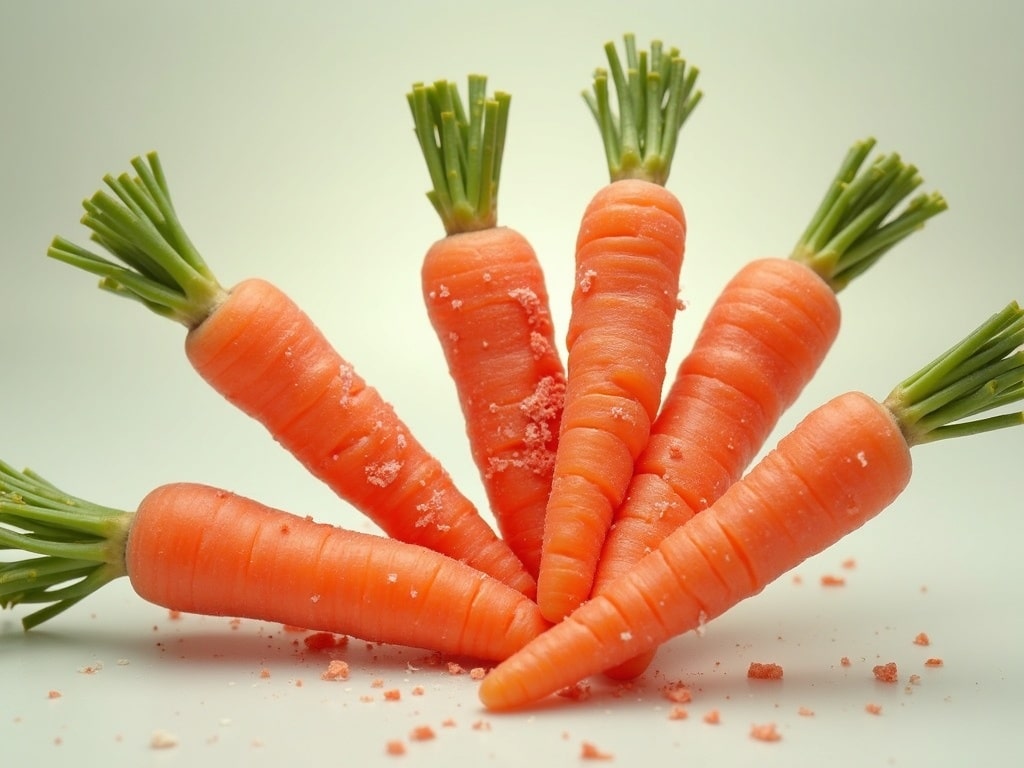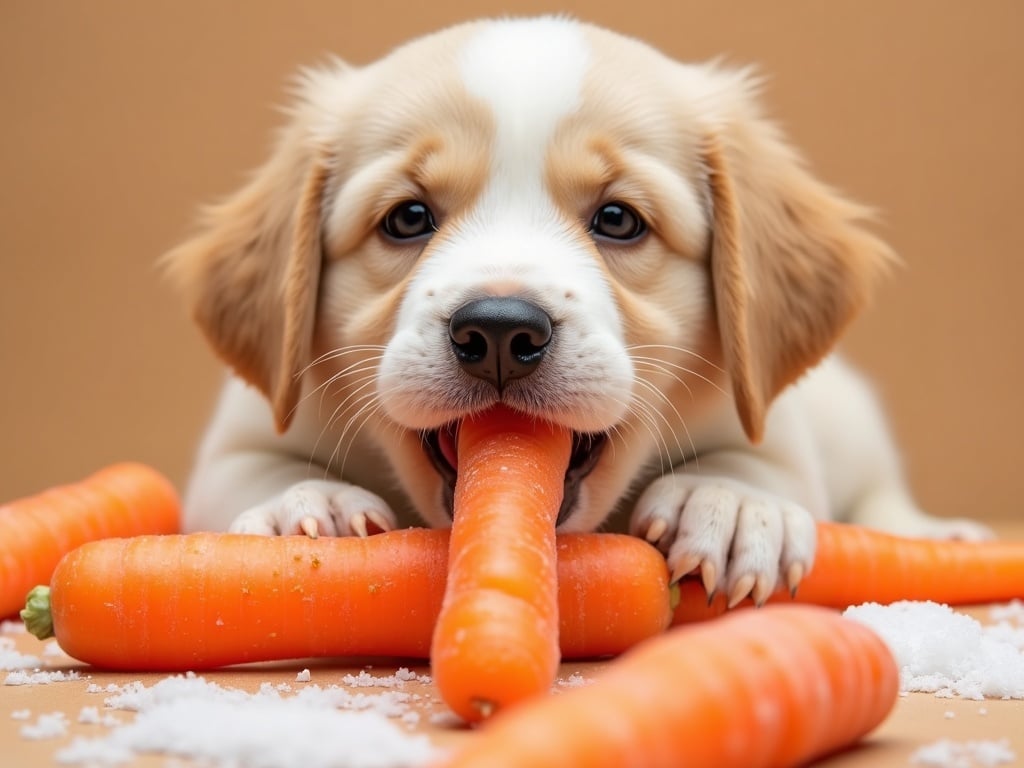Frozen Carrots & Genius Hacks: Ultimate Puppy Teething Guide
Bringing a puppy into your home is an exciting and heartwarming experience. But along with the cuddles and playtime comes a less adorable phase: teething. Watching your adorable furball gnaw on everything from your shoes to the table legs can be frustrating, but understanding the teething process and knowing how to provide effective puppy teething relief can make this stage much more manageable for both you and your pup.
What is Puppy Teething and When Does it Start?
Puppy teething is the natural process of a puppy’s baby teeth being replaced by permanent adult teeth. Just like human babies, puppies experience discomfort as their new teeth erupt. This discomfort leads to increased chewing as they instinctively try to relieve the pressure and pain in their gums.
The teething process typically begins around 3 to 4 months of age. Before this, puppies have a set of temporary teeth (also known as milk teeth or puppy teeth) that are sharp and needle-like. These baby teeth are perfect for nursing, but they aren’t designed for a lifetime of chewing and tearing. Adult teeth are stronger and more suited for a dog’s adult diet.
Stages of Puppy Teething: A Week-by-Week Timeline
While the exact timeline can vary slightly depending on the breed and individual puppy, here’s a general week-by-week breakdown of the teething process:
- 0-3 Weeks: Puppies are born without teeth and rely entirely on their mother for nutrition.
- 3-6 Weeks: The puppy’s milk teeth begin to erupt. By 6 weeks, they usually have a full set of 28 temporary teeth.
- 12-16 Weeks (3-4 Months): This is when the real fun begins! The milk teeth start to loosen and fall out as the adult teeth push through. Expect increased chewing during this stage.
- 4-7 Months: Adult incisors, canines, premolars, and molars erupt. This is the most intense period of teething.
- 8+ Months: By around 8 months, most puppies have their full set of 42 adult teeth. The teething process should be complete, and the excessive chewing should subside.
Common Symptoms of Puppy Teething: What to Look For
Recognizing the symptoms of teething can help you provide appropriate puppy teething relief. Here are some common signs to watch out for:
- Excessive chewing: This is the most obvious sign. Your puppy will chew on anything and everything they can get their paws on.
- Drooling: Increased salivation is common as the gums are irritated.
- Red or swollen gums: Check your puppy’s gums regularly for signs of inflammation.
- Whining or irritability: Teething can be painful, making your puppy more fussy than usual.
- Loss of appetite: Sore gums can make eating uncomfortable.
- Blood spots on toys: It’s normal to see small spots of blood on chew toys as teeth fall out.
- Pawing at the mouth: Your puppy may rub their face or paw at their mouth in an attempt to relieve the discomfort.
Why Do Puppies Teethe So Much? The Science Behind the Chewing
Chewing is a natural instinct for puppies, and it becomes even more pronounced during teething. Here’s why:
- Pressure relief: Chewing provides counter-pressure that helps to relieve the discomfort of erupting teeth.
- Loosening teeth: The act of chewing helps to loosen the milk teeth, allowing them to fall out more easily.
- Exploration: Puppies explore the world through their mouths, and chewing is a way for them to investigate new textures and objects.
- Boredom and anxiety: Chewing can also be a way for puppies to relieve boredom or anxiety, especially when they are left alone.
Frozen Carrots and Other Safe Chew Toys for Teething Puppies
Providing your teething puppy with a variety of safe and appropriate chew toys is crucial for redirecting their chewing behavior and providing puppy teething relief. Here are some popular and effective options:
- Frozen carrots: A chilled or frozen carrot provides a soothing and safe chewing experience. Always supervise your puppy to prevent choking.
- Frozen washcloths: Soak a clean washcloth in water or broth, twist it into a rope, and freeze it. The coldness will numb the gums.
- Rubber chew toys: Choose durable rubber toys designed for teething puppies. Look for toys that can be filled with treats or frozen for added relief.
- Rope toys: Supervise your puppy when playing with rope toys, as they can ingest strands of the rope. Discard the toy if it starts to unravel.
- Soft plush toys: While not as durable as other options, soft plush toys can provide comfort and a gentle chewing experience.
DIY Puppy Teething Toys: Recipes and Instructions
Making your own puppy teething toys can be a fun and cost-effective way to provide puppy teething relief. Here are a few simple recipes:
- Frozen broth cubes: Freeze chicken or beef broth in ice cube trays. These tasty frozen treats provide both chewing relief and hydration.
- Stuffed Kongs: Stuff a Kong toy with a mixture of peanut butter (xylitol-free!), banana, and yogurt, then freeze it. This will keep your puppy occupied for hours.
- Braided fleece toys: Cut strips of fleece fabric and braid them together to create a soft and durable chew toy.
How to Soothe a Teething Puppy: Effective Comfort Techniques
In addition to chew toys, there are several other ways to soothe a teething puppy and provide puppy teething relief:
- Gentle gum massage: Gently massage your puppy’s gums with your finger. The pressure can help to relieve discomfort.
- Cold compresses: Apply a cold compress to your puppy’s cheek to numb the area.
- Offer soft food: If your puppy is having trouble eating dry food, try softening it with water or offering wet food.
- Provide extra attention: Comfort and reassurance can go a long way in helping your puppy feel better.
What NOT to Give a Teething Puppy: Dangerous Toys and Substances
It’s important to be aware of toys and substances that can be dangerous for teething puppies:

- Small toys: Avoid toys that can be easily swallowed, as they pose a choking hazard.
- Hard bones: While bones might seem like a good idea, they can splinter and cause internal injuries.
- Rawhide chews: Rawhide can be difficult to digest and can cause blockages in the digestive system.
- Toxic substances: Keep household cleaners, medications, and other potentially toxic substances out of your puppy’s reach.
- Children’s toys: Pieces can easily be chewed off and swallowed.
- Anything containing Xylitol: This artificial sweetener is extremely toxic to dogs.
Puppy-Proofing Your Home During Teething: Protecting Your Belongings
A teething puppy will chew on anything they can get their paws on, so it’s essential to puppy-proof your home to protect your belongings:
- Remove valuable items: Store shoes, books, and other items out of your puppy’s reach.
- Cover electrical cords: Chewing on electrical cords can be deadly. Use cord covers to protect your puppy.
- Secure furniture: Cover furniture with blankets or sheets to protect it from chewing.
- Use bitter apple spray: Apply bitter apple spray to furniture legs and other items to deter chewing.
- Supervise your puppy: Always supervise your puppy when they are out of their crate or playpen.
Training During Teething: Redirecting Chewing Behavior
Teething doesn’t have to put a halt to training. In fact, it’s a great opportunity to teach your puppy appropriate chewing behavior:
- Leave it command: Teach your puppy the leave it command to prevent them from picking up and chewing on forbidden items.
- Positive reinforcement: Reward your puppy with praise and treats when they chew on their designated chew toys.
- Redirection: If you catch your puppy chewing on something they shouldn’t, redirect their attention to a chew toy.
- Consistent boundaries: Be consistent with your rules and boundaries to avoid confusion.
Consider exploring further insights into Decoding the Puppy Vaccination Schedule: A Vet’s Insider Look to ensure your puppy has a healthy start from all aspects.
Teething vs. Dental Disease: Knowing the Difference and When to See a Vet
While teething is a normal process, it’s important to be able to distinguish it from dental disease. If you notice any of the following symptoms, consult your veterinarian:
- Severe pain and swelling: Unusually excessive swelling in conjunction with painful sensitivity warrants a vet visit.
- Bleeding gums: While some spotting is normal during teething, profuse bleeding isn’t.
- Loose teeth in adult dogs: Loose teeth in an adult dog is almost always a sign of periodontal disease.
- Bad breath: Persistent bad breath can be a sign of infection.
- Difficulty eating: If your puppy is refusing to eat due to pain, seek veterinary attention.
Nutrition for Teething Puppies: Supporting Healthy Tooth Development
Proper nutrition is essential for healthy tooth development in puppies. Feed your puppy a high-quality puppy food that is specifically formulated to meet their nutritional needs. Look for foods that are rich in calcium and phosphorus, which are important for strong teeth and bones.
Preventing Future Dental Problems: Establishing Good Oral Hygiene Habits Early
Establishing good oral hygiene habits early in life can help to prevent dental problems in the future:
- Regular tooth brushing: Brush your puppy’s teeth daily with a dog-specific toothbrush and toothpaste.
- Dental chews: Offer dental chews that are designed to help remove plaque and tartar.
- Professional dental cleanings: Schedule regular professional dental cleanings with your veterinarian.
Is Your Puppy Teething Too Much? Understanding Excessive Chewing
While chewing is normal during teething, excessive chewing can be a sign of other underlying issues. If your puppy is chewing excessively, consider the following:
- Boredom: Make sure your puppy is getting enough exercise and mental stimulation.
- Anxiety: Chewing can be a sign of anxiety. Consult with a veterinarian or certified dog trainer to address any anxiety issues.
- Nutritional deficiencies: Although rare with quality puppy food, ensure they’re getting proper nutrients.
- Underlying medical conditions: Rule out any underlying medical conditions that could be contributing to the chewing.
Puppy Teething Relief Products: Reviews and Recommendations
With so many puppy teething relief products on the market, it can be difficult to choose the right ones. Here are a few of our top recommendations:
- Nylabone Puppy Teething Keys: These durable chew toys are designed to massage gums and provide long-lasting chewing relief.
- KONG Puppy Teething Stick: This toy can be filled with treats or frozen for added relief.
- Petstages Cool Teething Stick: This chew toy can be frozen to provide a soothing and cooling effect.
Teething is a challenging but temporary phase in a puppy’s life. By understanding the process, providing appropriate chew toys and relief measures, and establishing good oral hygiene habits, you can help your puppy navigate this stage with ease. Remember to be patient, consistent, and loving, and soon enough, your puppy will have a beautiful set of adult teeth and a healthy, happy smile.

